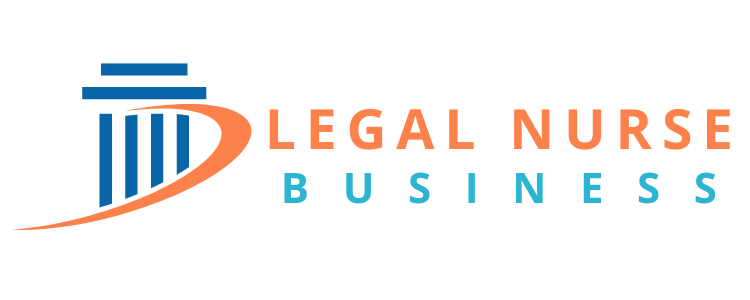How Technology Addiction Affects LNCs Part 2
Technology addiction is a growing problem we cannot ignore. Today, technology often dominates communication, leaving little room for meaningful face-to-face interaction.
Left unchecked, technology addiction can erode productivity, focus, and even professional relationships. However, by recognizing the signs and implementing healthy boundaries, you can regain control and leverage technology to support—not hinder—your success.
As you work toward a balanced approach, you’ll find that stepping away from screens improves your efficiency and overall well-being.
Are you ready to reclaim your time and focus? Start today by setting limits, fostering offline connections, and embracing the tools that truly serve you.
Technology Addiction Can’t Deliver Patient Care Through Texting
The increasing reliance on technology raises serious concerns about how young professionals engage in healthcare and other helping professions. Many are not developing the interpersonal skills essential for these roles, which could have severe consequences for patient care.
Nursing, for example, demands intimate, face-to-face interactions, critical thinking, and problem-solving skills.
These abilities are vital for effective care, and their absence can lead to devastating outcomes. In medical and nursing malpractice, we see firsthand how faulty decision-making and lack of engagement can harm patients.
This concern isn’t limited to nursing. Specialists working with social workers, teachers, therapists, and other healthcare professionals echo similar worries. A common observation is the inability of students and trainees to disconnect from their devices, even during classes or critical training sessions. This persistent distraction has not only affected learning but has also led to tragic incidents.
Consider the case of an anesthesiologist in Texas who reportedly used an iPad during a procedure. While his focus was elsewhere, the patient tragically died on the operating table, leading to an investigation.
In another instance, a group of nurses were distracted by viewing wedding photos on an iPad. They failed to notice a patient’s call bell, resulting in the patient falling and sustaining severe injuries. The nurses involved faced disciplinary action, with their licenses at risk.
In a recent account, a nurse midwife took photos of a newborn who had an oddly shaped head, and posted them on her social media account. The jury awarded $5.6 million for the violation of the family’s privacy.
These examples highlight the dangers of misplaced attention in healthcare settings and violation of privacy. Patient care is inherently human-centered and requires presence, focus, and connection. No amount of texting, scrolling, or digital convenience can replace the hands-on care and critical thinking that save lives.
If we want to prevent harm and maintain the integrity of healthcare professions, we must address the impact of technological distraction and prioritize the development of interpersonal skills. This is not just a professional obligation—it’s a moral one.
Technology Addiction: A Question of Balance
In our technology-driven world, making time for genuine, face-to-face interactions is more important than ever.
We need moments with family and friends free from the constant interruptions of buzzing phones and notifications. Building meaningful connections requires undivided attention, which means setting technology aside during conversations.
Equally important is prioritizing activities that help us relax and refocus—whether walking, reading a book, or simply sitting quietly. These moments of mindfulness enable us to recharge and engage with others more thoughtfully and effectively.
I’m not anti-technology; I’m far from it. I rely on it daily for work and communication. However, I deliberately silence my devices when I’m with a friend or family member. In those moments, the person in front of me is my priority. Their words, expressions, and presence deserve my full attention.
Maintaining this balance requires self-discipline. We must consciously decide to put people before screens and take control of our habits. Doing so can foster deeper relationships and ensure that the moments we share with others are meaningful and genuinely connected.
As our dependence on technology grows, so does the need to address its impact on human connection and professional responsibility.
Constant distractions erode intimacy in personal relationships, leaving people feeling unheard and undervalued. Professionally, especially in healthcare and other helping fields, distractions can lead to errors, neglect, and harm.
Achieving a balance requires conscious effort.
We must reclaim our ability to focus, engage, and be present—whether by turning off notifications during a family meal, silencing devices during patient care, or choosing to relax and recharge without screens.
Technology is a powerful tool, but it should never replace the human touch, attention, and care that build trust and save lives. By prioritizing presence over pings, we can create stronger connections and meaningful interactions in every area of our lives.
Pat Iyer is president of The Pat Iyer Group, which develops resources to assist LNCs in obtaining more clients, making more money, and achieving their business goals and dreams.
 Have you heard the most recent podcasts on Legal Nurse Podcast? The show is in its 8th year, putting it in the top 1% of all podcasts for its longevity. Watch our podcast on YouTube at http://LNC.tips/YouTube.
Have you heard the most recent podcasts on Legal Nurse Podcast? The show is in its 8th year, putting it in the top 1% of all podcasts for its longevity. Watch our podcast on YouTube at http://LNC.tips/YouTube.
Join our Facebook group, LNC Business Growth Circle, to be part of our LNC community.
Pat’s related websites include the podcasts broadcast at podcast.legalnursebusiness.com, and writing tips supplied at patiyer.com.
Get all of Pat’s content in one place by downloading the mobile app, Expert Edu at www.legalnursebusiness.com/expertedu. Watch videos, listen to podcasts, read blogs, watch online courses and training, and more.


[…] As you work toward a balanced approach, you’ll find that stepping away from screens improves your efficiency and enhances your overall well-being. See part 2 of this topic here. […]